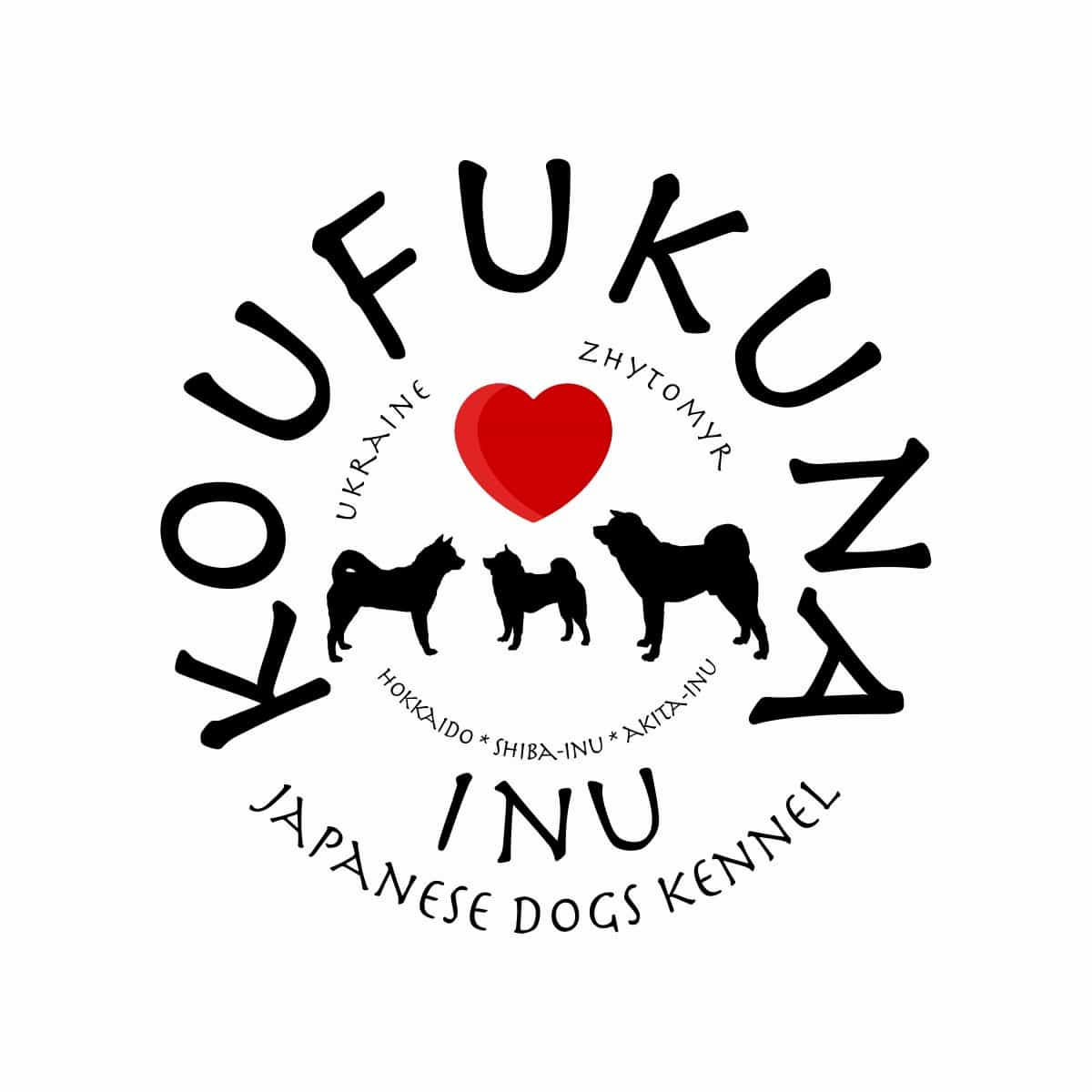
The Akita Inu is a dog breed originating from Japan and does not go unnoticed due to its strong and powerful appearance. Akitas are brave and fearless, but behave calmly, quietly and with dignity.
They are independent and reserved with strangers, but obedient and extremely loyal towards their family, although they almost never tolerate all sorts of nonsense.
Akita Inu is noble and majestic. The breed gained its popularity not only thanks to the famous film "Hachiko", but primarily due to beauty, temperament, good character and incredible loyalty to the owner.
Cheerful, peaceful and active - Akita conquers the heart of anyone at first sight.
Akitas are large spitz-shaped dogs that were first bred to hunt bears but are now kept as pets, therapy dogs, or police or military dogs. They have a bright temperament and a very complex personality, sometimes not easy to understand. The Akita is dominant and intolerant of other animals, especially dogs of the same sex, and they need consistent leaders who are capable of solid training.
On the Internet, you can find thousands of photos of tourists visiting Japan next to the dog monument. The bittersweet history of Hachiko led to the fact that during his lifetime in 1934 a monument was erected as a symbol of Loyalty and Pride, which later became the national treasure of Japan. And after this story hit the movies, Akita Inu gained immense popularity around the world.
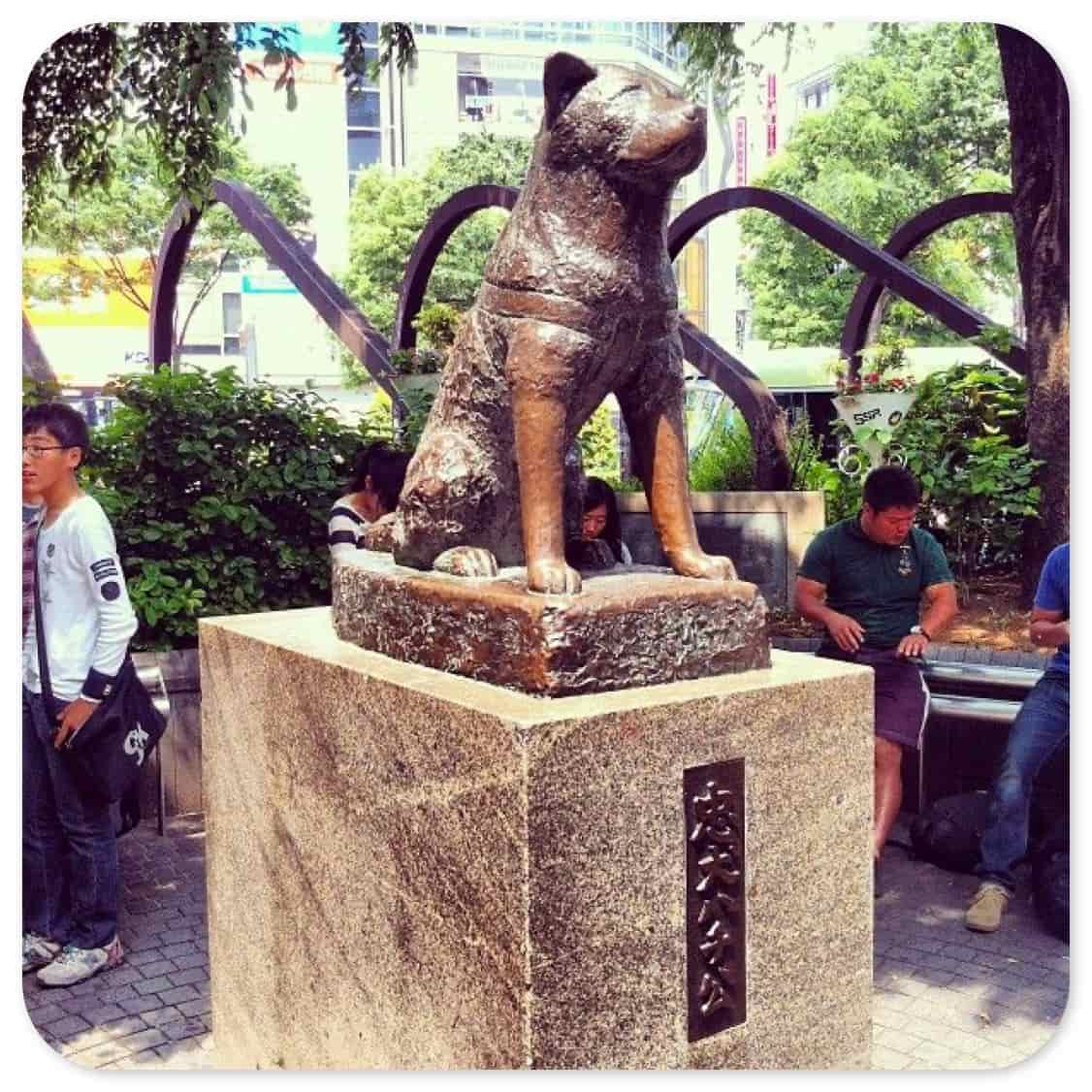
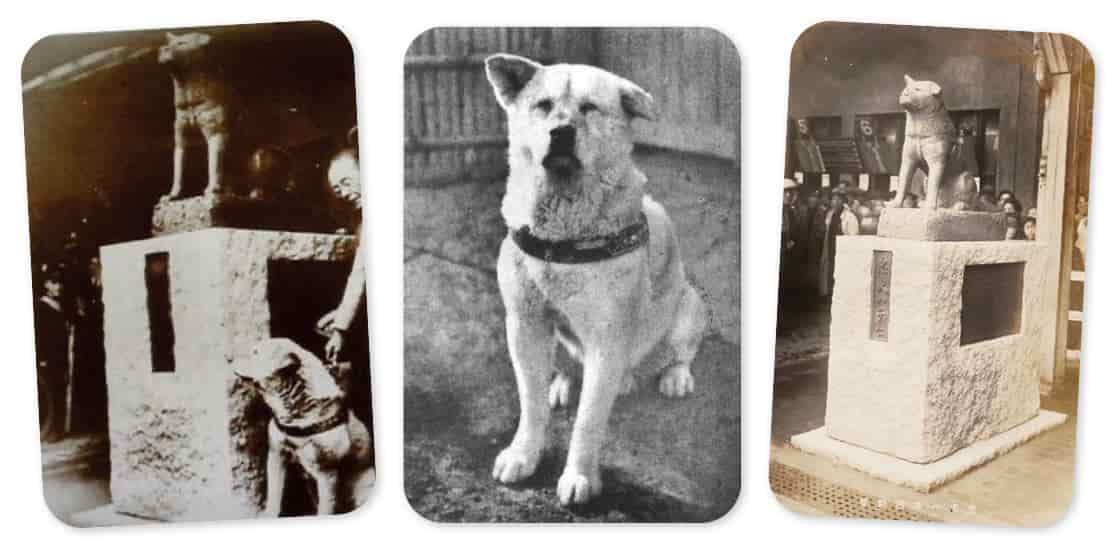
Akita Inu — breed History
The Akita Ina, also known as the Akita Ken, Japanese Akita or Large Japanese Dog, was bred in the early 17th century in the mountains of northern Japan, in Akita Prefecture. Akitas are one of the oldest dogs in Japan and the breed has remained unchanged for centuries. Their ancestor is the dog Matagov, who accompanied the traditional winter hunter of Northern Japan - Matagov. The breed was developed to help hunt wild boars, Japanese deer, and Asiatic Jezo black bears. Generations of selective breeding have bred the Akita as a powerful hunter with a tough work ethic and a fearless heart. When Akita ownership was limited to the imperial family and their court.
By the end of the 19th century, the originally Japanese dog was crossed with Mastiffs and Tosas, resulting in a much more ferocious breed. Dog fighting was banned in Japan in 1908, but interest in the breed remained.
Emperor Hirohito declared the Akita Inu a cultural monument and national treasure in 1931.

The Second World War almost led to the extinction of the Akita. There was not enough food for them, they were eaten by hungry people, or they were killed after a government order aimed at preventing the spread of disease by culling all non-military dogs. Through the efforts of some people, Akitas were released into the remote mountainous regions where they continued to breed with their ancestors, thereby surviving the war. The rest began to cross them with German Shepherds in order to turn them into military dogs and save them from death. In the early 20th century, Akitas were also crossed with other breeds such as the English Mastiff, Great Dane, St. Bernard and Tosa Inu to give them certain fighting dog traits.
After the Akita came to the United States, their further crossing took place. This is how the American Akita was born. Since then, Akitas from the US and Japan have been considered two separate dog breeds. The American Akita is only considered a different type of Akita in the US and Canada, as it is considered a separate breed in other countries. In Japan, this topic is quite controversial, and since the Akita is the national symbol of the country, there are breed standards that have been created for careful breeding that clearly distinguish between the Japanese and American Akita.
As a result, after the war, the recognized Japanese breed Akita disappeared, leaving only Akita matagi (the original hunting Akita), fighting Akitas (a cross between Akita matagi and mastiff) and Akita shepherd dogs (a cross between Akita matagi and German Shepherd). Dogs that shared all the characteristics of the different types of Akita were known as Kongo-go, which became quite popular in the US and UK. However, none of the three types, or even the Kongo, could replace the original Akita breed that the Japanese community held dearly in their hearts in the pre-war years. After the war, Akitas began to be bred again and efforts were made to give them a more standardized appearance in order to repair some of the damage done to past crosses. The resulting breed has become the standard for the now recognizable Japanese AKIT.
The Akita Ina was recognized as a breed by the FCI in 1964.
The breed entered the AKK stud book in 1972.
Akita Inu Appearance

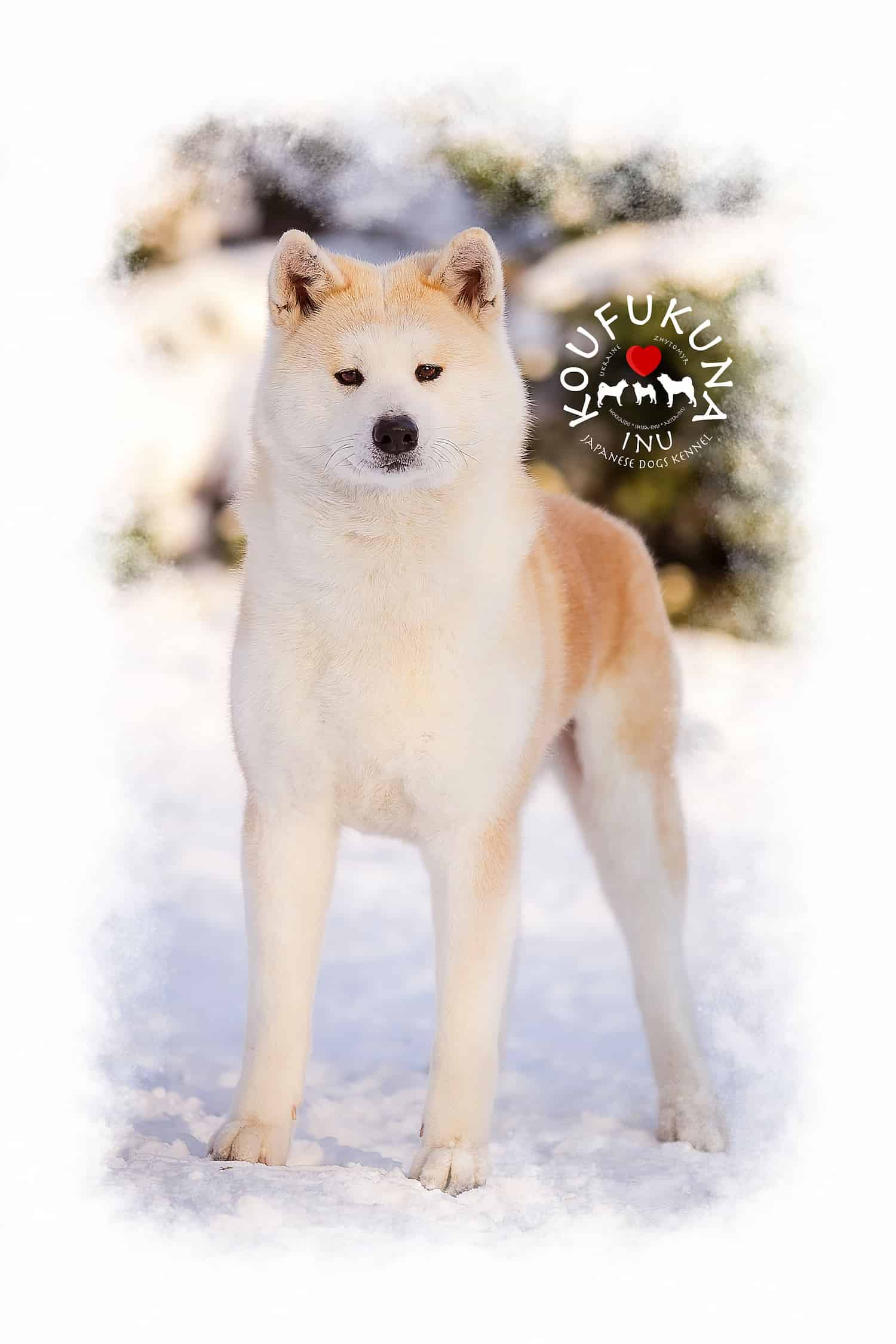
The Akita is a breed of large dog with a fluffy tail curled around the back and clearly alert ears. Compared to the American Akita, the Japanese Akita is slightly shorter and lighter.
The Akita In has a slender, muscular body. The head is relatively small, in proportion to appearance.
According to the standards, male Akitas have a height at the withers of 67 cm, while females are usually within 61 cm. A deviation of more or less than 3 cm is allowed.
The Akita's weight varies from dog to dog, but a typical adult dog's weight is:
- 40-45 kg (males);
- 32-45 kg (females).
One of the most famous physical characteristics of the Akita is their large and rounded head with a large and short muzzle, much like a bear, and always with a hint of a smile.
All Akitas have brown triangular eyes. Their dark, lively eyes often stare into the distance, where they seem to fixate on something imaginary. Straight triangular ears, curved at the level of the neck, and wide black noses. The neck is thick and muscular, over a broad and deep chest.
Dogs of the Akita Ina breed are not too long and widen slightly to the shoulders. They have a long and straight back with strong and powerful shoulders. On the back lies a double curved tail, large and thick.
The forelegs and hind legs are strong and powerful, like cat paws with webbed feet and large claws that you will need to trim several times a year.
The combination of all these physical characteristics of the Akita In gives the dog a powerful and graceful appearance. They are just adorable!
Colors Akita Inu
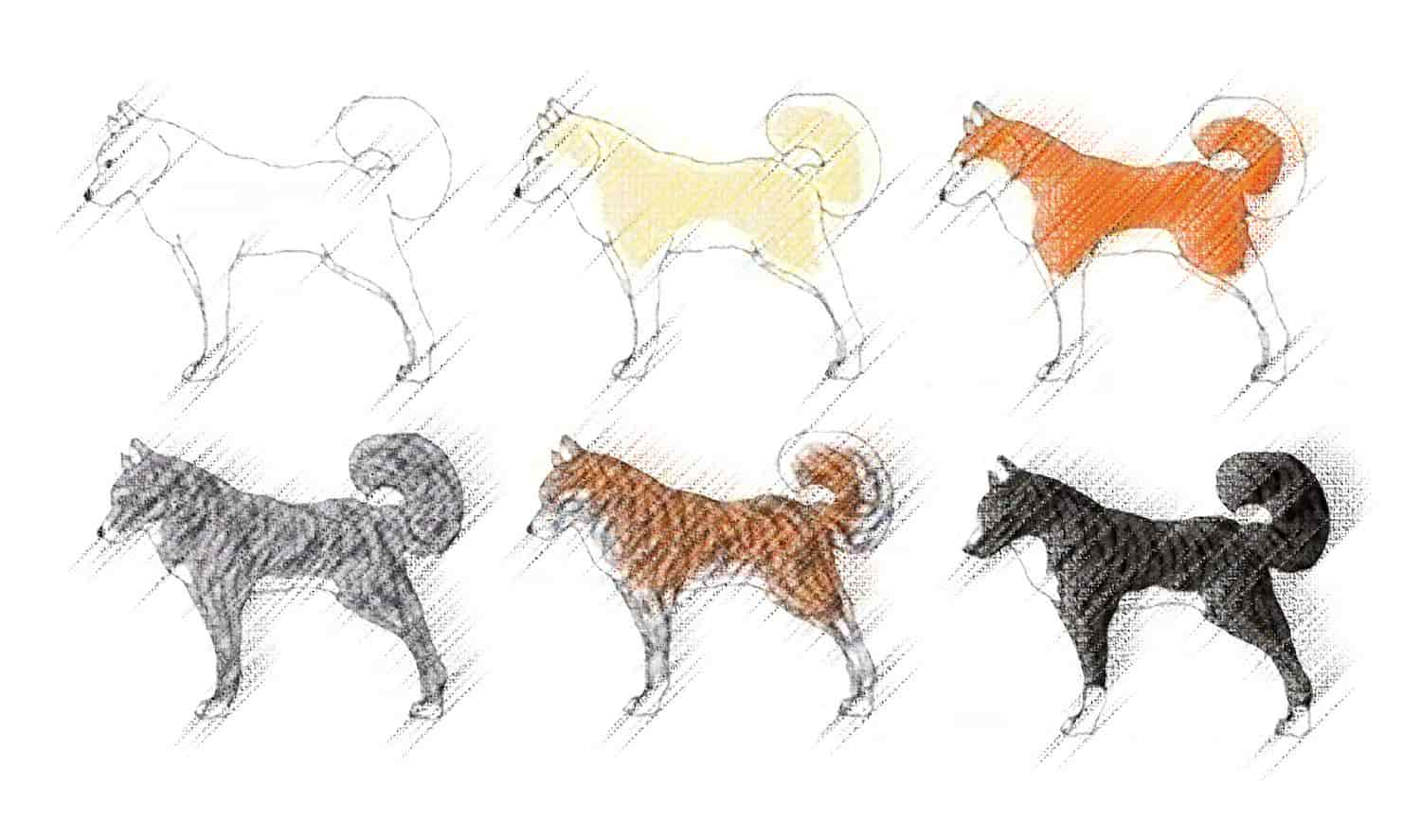
The Akita In world is very colorful. American and Japanese Akita differ in coat color. The American Akita comes in all possible colors.
However, the Japanese Akita may have only a few of them:
- Aka (red);
- Torah (brindle);
- Shiro (white).
At the same time, brindle colors have three more options: Kurotora (black-brindle), Akatora (red-brindle) and Shimofuri (silver-brindle).
A characteristic feature of the Japanese Akita-in is URAJIRO - this is white hair on the sides of the muzzle and on the cheeks, on the underside of the jaw, neck, chest, body and tail, as well as on the inside of the legs. Urajiro must be present on all colors of the breed, except for White Akitas.
There is one requirement for all colors of the breed - the color must be clean, the pattern is clear. Divorces and blurring of lines are not allowed. Sometimes the color of the undercoat is slightly different from the main one, but this is quite acceptable.
The appearance of the Japanese Akita is so strictly monitored at shows that even the slightest presence of an incorrect pattern or a black mask can cause disqualification.
Japanese Akita Inu Wool

Akitas are large dogs with thick double coats, reminiscent of Siberian Huskies. Their coat is usually short, although there are some Akitas that have long coats (known as Moka) due to the presence of a recessive gene.
It is generally accepted that the Akita has a double coat - NIJUUHIMOU. But in fact, the Akita In coat consists of three types of hair:
- The outer protective layer, made of stiff outer needle hair, is about 1.5 cm longer than a regular coat, it adds shine. Needle hair is coarse, present in the neck, spine, thighs and tail.
- Regular wool. Rough, tough, protecting the body from injury and water-repellent.
- The undercoat is dense, fine and very soft. This part of the coat is very thick in winter to provide extra insulation and loses volume during the warmer months of the year. The undercoat is almost invisible due to the guard hair covering it, which is distinguished by elasticity and the ability to repel moisture, so that even after swimming, the Akita-in coat under the guard hair remains dry. Tight to the body, it protects the dog from the cold, so the breed is suitable for keeping outdoors all year round.
The hair on the head, ears, and lower limbs is shorter and lies closer to the skin than on other parts of the body. The longest hairs (about 5 cm) are present on the neck, back, tail, closer to the croup six are shorter. On the tail, it is coarser, straight and very thick.
It should be noted that the coat of the Akita In these days is sometimes too soft and compressed, which leads to the fact that the body gets wet during rain or snow.
According to the standard, too long hair in an Akita is considered a vice. However, long-haired Akitas are no less beautiful and attractive. Their coat is softer, the guard hairs are slightly wavy at the base or along the entire length. Unfortunately, waviness is not allowed in show dogs.
In puppies, the coat is shiny, softer, it may seem long, but after molting it coarsens.
Akita sheds twice a year, during the molting period it is recommended to carefully comb out the coat, at least once a week. A bath followed by a cold air dryer and brushing will help speed up the natural process of coat change.
Akita Inu Character

Form follows function
L. Sullivan
All of the above brings us to the question: Is the Japanese Akita just a beautiful dog or is it something more?
If we look at the Akita Inu as a Japanese robot, then we immediately understand everything - the function determines the form.
Everything here has been thought out and tested by experience. It remains to study the user manual, turn it on and enjoy!
The modern Akita is a delicate work of Japanese dog handlers-developers, who had certain goals and objectives in the future, who turned the Akita Inu into a dog breed with not only a great shape, but also a great content.
All facets of the character of the Japanese Akita are determined by their functions, which dogs performed at different times in their history.
It is not at all surprising that the ideal Japanese dog, created over the past three centuries, has managed to absorb all the most valuable, most important and respected qualities for Japanese society: calmness, devotion, intelligence, fearlessness, endurance, and of course, beauty and strength.
Intelligent, calm and even-tempered, but stubborn
Akitas owe their beauty and endurance to the snowy and mountainous terrain from which they originate, awarding the dogs with double coats and a strong body, which allowed them to be used for hunting.
The use of Akita in hunting was the foundation of their character and temperament.
The natural temperament of the Akita-in is calm and balanced, but their use in hunting required fearlessness, courage, courage and intelligence from dogs, and also did not require great social skills.
The hunters needed dogs with intelligence that could make their own decisions, as the style of Japanese hunting allows dogs to be more independent in identifying wild boars or bears. The hunter went into the forest with only one or two dogs, which could remain alone for a long time.
Perhaps this is the reason for some stubbornness and the fact that Akita Inu, although friendly with others, should not be expected from them to behave like a “joyful puppy”.
Friendly but reserved
Akitas, like real Japanese, are friendly, but restrained, although sometimes you can be honored with the manifestation of their great love and affection.
In most cases, Akitas prefer to pretend not to notice you, they always try to be cool, sometimes it can seem like they are meditating. But it is necessary, for some reason, to happen, a calm and volyazhny Akita is ready to explode or shoot in any direction at any moment, being in a moment in another place.
The Japanese Akita In is reserved and calm in the presence of strangers, often wary, but becomes good-natured and sociable in his family.
Alpha dog with a fighting character

Also, the character of Akita-in was influenced by their use in dog fights and crossing with other fighting breeds. The Akita always looks at other animals as prey, even getting into fights from time to time due to their pride or misunderstanding of a stranger's body language.
The Akita Inu is naturally stubborn and likes to be in control of certain situations. Thus, when the Akita is threatened or challenged, it may act unusually or even aggressively to protect itself.
Whether it's squirrels, cats, or smaller dogs, the Akita will most likely chase them if given the opportunity. They can, of course, be trained to be good with other animals, but this can be a difficult task.
Given the mentioned stubborn, aggressive and possessive traits of the Akita breed, they need a patient and kind, but strict owner. Akitas are known to be alpha dogs and will not listen to people who they feel are not dominant over them. In addition, these dogs tend to get along poorly with other dogs of the same sex, regardless of breed.
The breed is not for beginners
Because of the Akita's strength and character, it's not necessarily the perfect fit for everyone.
Having such a dog is a dream, but if the dog is not raised properly, it can turn into a nightmare.
But this does not mean that the Akita Inu is some kind of devilish beast. Akita Inu needs the right approach.
Many argue that the Akita Inu is not a breed for beginner owners, and in general we agree with this.
However, there are always exceptions to the rule. Great desire, work, patience, thoughtfulness and love, on the part of the Owner, return strong devotion and friendship from Akita Inu.
You will immediately fall in love with each other and the Akita will become a true friend and companion, but only under the condition of complete reciprocity!
Akita Inu is a quiet dog
Being hunters in their blood, most Akitas don't like to bark - good news for those who want to have a quiet dog. These dogs often communicate with their owners by grunting, moaning, or making other sounds.
On the rare occasions when an Akita barks, it is likely that there is something wrong or unusual about the situation that the owners should be notified about. Some examples that would cause an Akita to bark include an approaching stranger or the presence of an animal.
Very active and cheerful
Akitas require long walks. Dogs are very playful and even being in old age will respond to the call of the owner to frolic.
Akita Inu Care
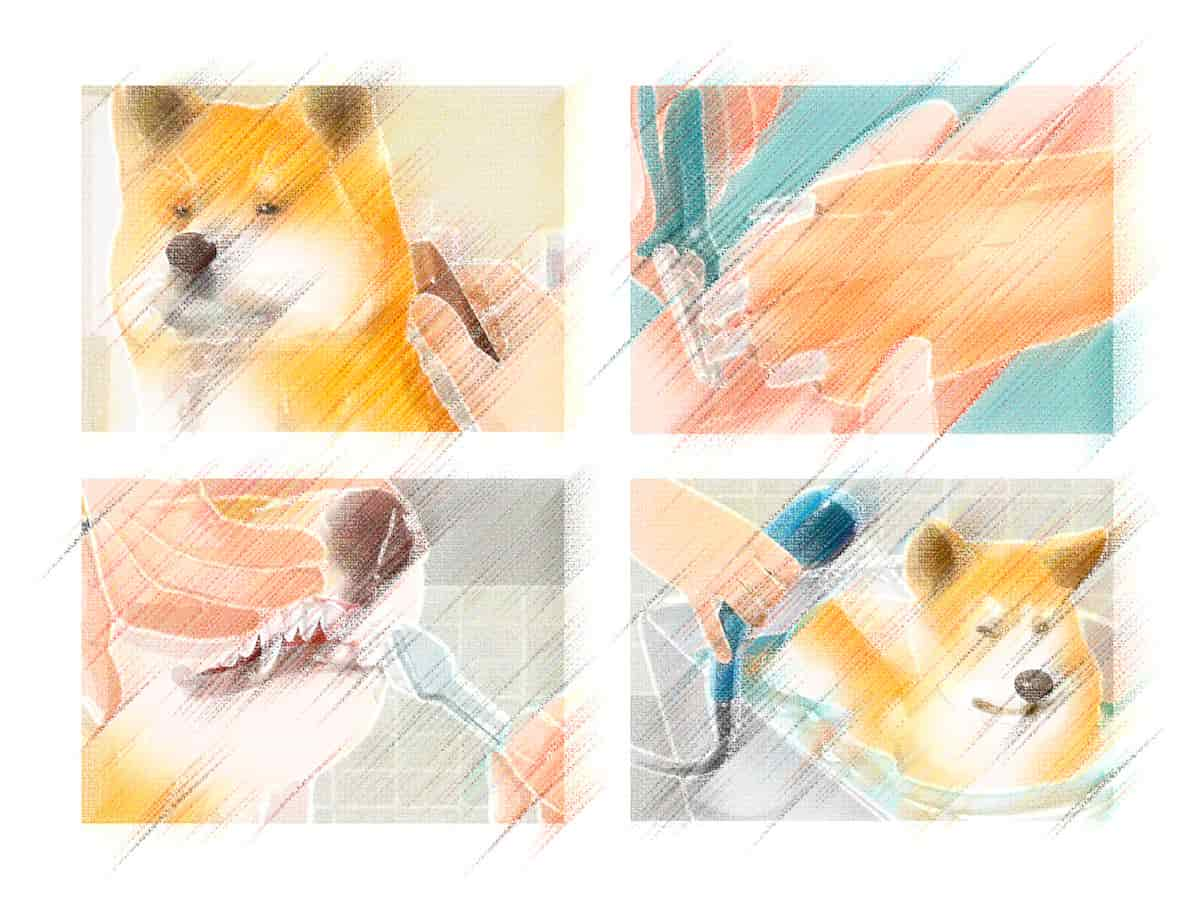
If you decide to get an Akita Inu, then you should not worry about caring for her - these dogs are very unpretentious in keeping. They are quite adapted to live on the street (preferably a warm booth), and can live quite well in an apartment, with easy care.
In general, you will have to monitor and care for the coat, teeth and claws.
Comb once a week
The coat of the Akita In is short and coarse and needs to be brushed regularly. Approximately once a week throughout the year will suffice. Weekly brushing will keep the coat healthy and reduce shedding.
The breed sheds heavily twice a year, so brushing should be more frequent, and be prepared to spend extra time caring for your dog this time of year.
When choosing an Akita In brush at the pet store, look for one that is suitable for the dog's double coat. As a general rule, a smooth brush or a flexible pin brush works well for double-coated dogs. Fluffy hairs on the paws, ears and tail should also be combed. A rough glove or rough rag is fine for grooming the muzzle.
A bath followed by a cold air dryer and brushing will help speed up the natural process of coat change.
Gently bathe 2-3 times a year
The Akita's coat contains the heavy oils needed to repel water. Try not to remove these beneficial oils from your coat by bathing too often.
In addition, Akita In dogs lick like a cat. This keeps the dog clean and eliminates odors, making frequent bathing unnecessary.
A bath every 4-6 months is usually sufficient. Of course, if your dog plays in the mud or gets very dirty, you should take a bath, even if he has only recently had one.
Brush your teeth 2 times a week
Akita Inu requires regular brushing. Buy a dog toothbrush and toothpaste and brush her teeth twice a week. Brush your dog's teeth as best as you can brush your own.
Failure to do so can lead to periodontal disease, bad breath, and discomfort while eating.
Your pet store should have toothbrushes and toothpaste for dogs. If necessary, try trial and error to find a scent your dog likes. Never use dental products for dog care. In particular, human toothpaste can cause disease in dogs.
Trim nails once a month
These dogs need to have their nails trimmed once a month. It will be easier to accustom the dog to this procedure if you start following the regimen when the Akita Inu is still a puppy.
Be careful and careful when trimming nails. To begin with, cut off very small parts of the claw until you are sure that you are doing everything correctly and safely.
Pet stores sell special nail clippers with built-in guards that prevent accidental clipping of large numbers of nails.
If you can't or don't want to handle it yourself (for example, because the dog is uncooperative or just scared), get a professional groomer to cut your dog's nails.
Education and training
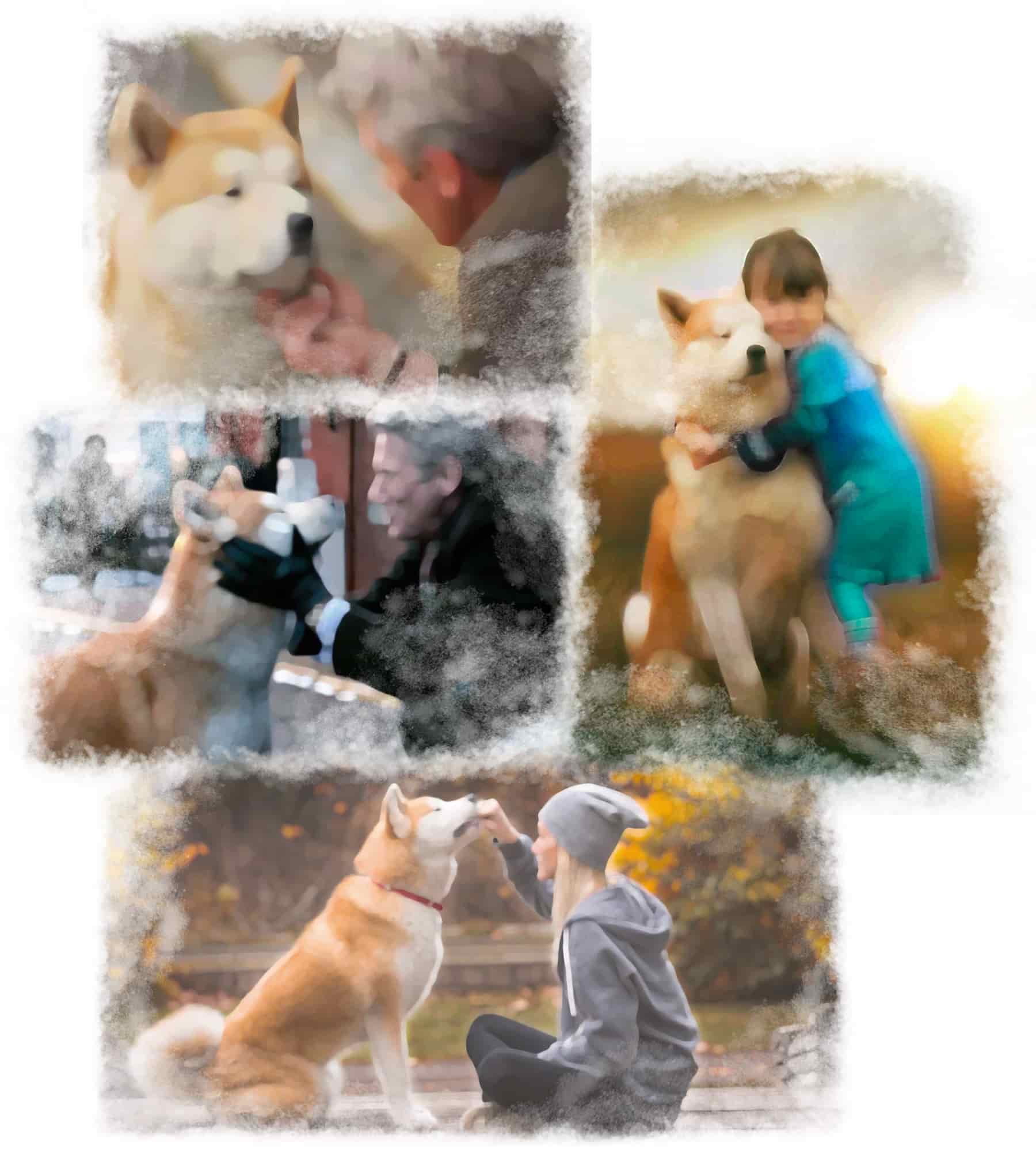
Proper obedience training and socialization will help keep the dog under control and show the best qualities of the Japanese Akita In character.
This dog breed is quite skittish, you should expect the learning process to take a little longer than with some other breeds.
You will need - perseverance, consistency and patience.
Set dominance
The Akita Inu can be a wayward, even stubborn dog.
If you want your dog to respect and obey you, you need to establish your dominance over him as early as possible.
Otherwise, he can become aggressive and disrespectful.
The most varied exercises
The Japanese Akita responds best to vigorous training and methods that use their natural intelligence.
They tire quickly with repetition, so short and varied sessions are more effective.
Daily mental exercise and enrichment are essential to keep this breed interested.
Because of their hunting background, Japanese Akitas tend to like to use their natural instincts to work their noses.
Requires perseverance and fortitude
The Japanese Akita is independent and self-reliant.
If there are no appropriate skills, then it will not be easy to train a pet.
For success in this business, the owner will have to show perseverance, and in some places demanding, so that the dog submits and recognizes the authority of a person.
Physical strength in this matter does not matter, only the strength of the spirit is important.
With a serious approach, training will bring positive results.
Akita Inu requires high activity
This breed has a relatively high energy level and needs a lot of exercise - at least a walk or two a day.
Be careful on walks to avoid walking in a dog park, where you can see the Akita's aggressive tendencies towards other dogs.
The Akita can develop some destructive habits when bored or left alone for too long. Your garden, house or apartment will not be delighted with this.
The Japanese Akita is an intelligent and social animal. She wants to spend time with you and your family and will need a variety of play activities to stay happy.
Treat your Akita and make sure he has toys to play with and carry around the house.
Prolonged solitary inactivity in the house is very likely to cause an energetic and intelligent dog to jump in when he gets bored and dig a hole or chew through a chair leg.
Socialization
Akitas are very smart dogs, but, as we wrote, they are capricious and stubborn, and therefore pose a certain danger to the people around them.
This makes studying challenging, but also a necessity.
In addition, early socialization is key.
Involve other people in the learning process in such a way that the Akita understands that you and other people are dominating.
Gradually accustom Akita Inu to children
Children should also be involved in the process of education and training, if they are between 10 and 12 years old, telling the dog what to do, treating it and rewarding it for success.
Younger children should be involved in feeding the dog, as well as getting in and out of the house so that the Akita Inu does not consider them subordinates.
Advise children to be kind and gentle with the dog and avoid loud noises or sudden movements when the dog is first socialized. This reduces the risk of children frightening or injuring the dog, as well as reacting aggressively to it.
With especially loud children, especially those who may live in more than one house with a dog, it is best to keep the Akita on a leash when she first starts interacting with children.
Akita In puppies are sometimes afraid of children. If you have a puppy, introduce the children gradually, allowing the dog to approach them when it is ready, and observe all interactions between the child and the dog.
Health and Common Diseases
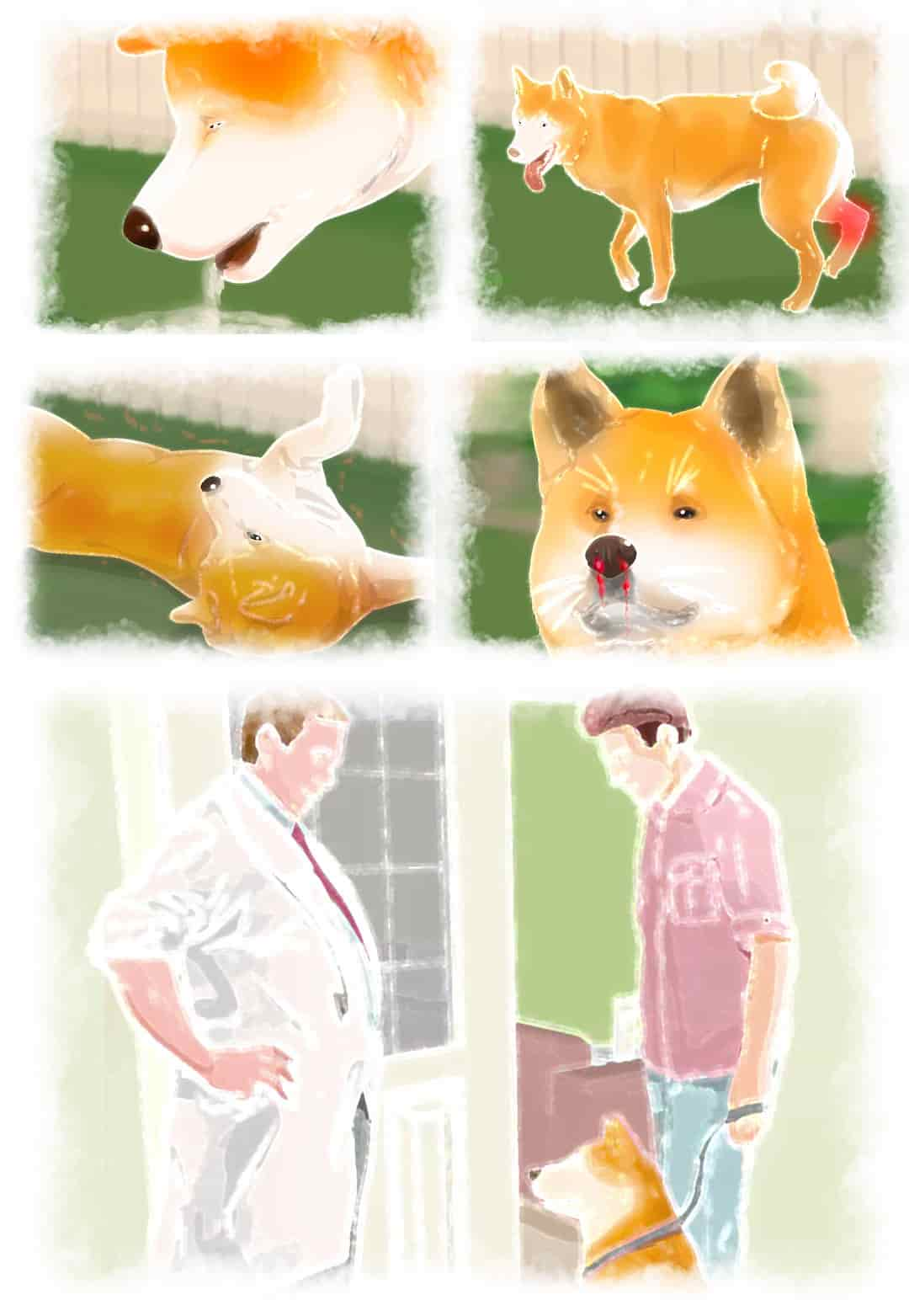
Akita-ina is prone to autoimmune diseases for which there are currently no genetic tests, such as sebaceous adenitis, uveodermatological syndrome, pemphigus, discoid lupus, food and environmental allergies, etc. There are cases of amelogenesis imperfecta that can be performed.
The Japanese Akita National Clubs and other organizations frequently require hip and eye examinations and strongly recommend examination for patella, thyroid problems, and amelogenesis imperfecta or enamel hypoplasia.
If your Akita is sick, find a veterinarian who is familiar with the breed. Known health problems for the Akita include various autoimmune diseases, skin and eye problems. Akitas are quite sensitive to anesthesia and other medications, so it's important that veterinary staff be aware of potential drug complications that may not affect other breeds.
Take your dog to the vet if:
- Nosebleeds, easy bruising, and blood in the bone or urine can be a sign of von Willebrand disease.
- Leaning to the side, balance problems, or walking in circles may be a sign of vestibular syndrome.
- A change in the color of a dog's coat may indicate that it is exposed to a lot of sun, which can cause damage to the dog's internal organs.
- Dry, scaly skin and hair loss on the head, neck, and back can be a sign of sebaceous adenitis.
How to Feed an Akita Inu: Nutrition, Treats, Supplements, Raw Food

The Akita is a large dog with a high activity level and high food intake. They require quality dog food to keep their bodies in good shape.
Akitas are large dogs with special dietary requirements. Any compromise with their diet will lead to serious health problems for the dogs.
Akitas are accustomed to natural nutrition. Traditionally, the Akita dog's staple foods were rice, fish, and sea plants.
Akita Inu Food
Akitas need both dry and wet food in their diet as dry food helps to strengthen their teeth and gums and prevent bad breath. Moist food keeps them hydrated and promotes healthy coat and skin.
When buying Akita In food, try not to save money, as any food is not suitable for a strong and powerful dog's body. Try to buy selected and recommended food for large and energetic dogs.
This excellent quality dry dog food provides a complete diet for growing Akitas and can be mixed with water, canned food or broth.
For a better Akita appetite, boiled eggs, cheese, vegetables, and other proper treats can be added to the feed, but these additions should not exceed more than ten percent of her daily nutritional intake.
How often to feed an Akita Inu?
How much and how often a dog should be fed depends on its age, activity level, build and metabolism. In general, the Akita Inu should be fed at least twice a day. Quality, complete dry food should be a staple of your dog's diet.
Some owners also recommend feeding the Akita one large meal a day, which can lead to digestive issues. Feeding infrequently can cause the dog to swallow food readily and quickly, and this can lead to bloating problems.
Sometimes owners recommend fasting the dog once a week for the purpose of prevention. We consider such an action an extreme and ineffective measure.
-
Nutrition for puppies 2-5 months
The Akita puppy needs a good diet as it is in its growth stage. Adult food is not suitable for them and will interfere with its development. Therefore, puppy food should be fed according to age. At 2-5 months they should be given 150-250 g per day, which should be divided into three portions.
-
Nutrition for puppies 6-8 months old
At 6-8 months, they should be given at 300-400 grams per day, divided into two portions. Do not feed them more than necessary as their weight will increase at a young age and affect their adult life.
-
Nutrition for an adult Akita
As your Akita puppy matures into an adult dog, the type and amount of food should be changed according to their size and activity level. They need to be given 500-800 grams per day in 2-3 doses.
Akita Inu Nutrition Tips
- Always provide fresh drinking water and do not forget to periodically wash dishes with food and water.
- When switching from a kennel food or introducing a new food, do so within one to two weeks. Gradually adding more and more of the new brand mixed with the old food until you are completely on the new food. This applies to all food transitions to avoid indigestion.
- Add treats or supplements gradually so your dog can adjust. It is also helpful when allergic reactions occur and allows you to quickly determine the cause.
- If you notice diarrhea in an Akita during the transition to another food, for immediate relief, try a special medication and give only water for 24-48 hours until loose stools disappear. When your dog regains his appetite, consider adding probiotics, such as plain yogurt, or suitable supplements to the bland diet. A soft diet may include boiled chicken breast and rice, cottage cheese, mashed fried yams (sweet potatoes) or canned pumpkin without sugar.
- Watch for any symptoms of allergies or food intolerances. Wheat, corn and chicken are common allergens for the Akita.
- Keep an eye on the freshness of food and feed, especially those that use natural preservatives - vitamins E or C. Such food should be consumed within a limited time after opening, otherwise they will lose their freshness and value.
- Consult a veterinarian or canine nutritionist if you wish to use a homemade or raw food diet for the Akita to avoid nutritional deficiencies or gastrointestinal distress.
- Lightly run your hand along the Akita Inu's ribs, if the muscles are felt, then the dog is in good shape.
- Do not allow excessive consumption of treats or food for people.
Chewing treat for Akita Inu
Let's chew the treat only under supervision.
Make sure you give the correct size for the dog's size, and remove the treat before it gets small enough that the dog doesn't choke on swallowing.
Experiment with what your dog likes and use common sense.
Puppy Safe Chews:
- Dehydrated vegetables.
- Dry meat sticks (hooligan or ruby sticks)
- A treat based on dehydrated meat: tendons, tracheae, jerky, rabbit ears, duck feet.
Watch out for fat! Some treats, such as pig's ear, may be too fatty for young puppies.
Chewy treat for Akita In which adult teeth have sprouted (approximately 5 months old)
- Split corner of an elk or deer. Buy the ones that have a large area of exposed bone marrow.
- Edible gummies can add unnecessary calories in the form of carbohydrates, so use with caution.
- Ice cubes, fruits and vegetables as a treat. Some puppies enjoy chewing on ice cubes, apple wedges and carrots, especially when teething due to the hard and cold texture.
- Your dog may also like cucumber slices, seedless, green beans, baked sweet potatoes, steamed broccoli, etc.
Don't worry if your dog refuses to eat his fruits and vegetables. It is more important to know the foods to avoid due to toxicity.
If you are using a workout treat rather than a chew treat, keep these treats small and easy to chew and swallow as you will be giving them frequently, especially in workout mode. Try to often reward several small treats instead of one large bite to celebrate excellent behavior.
If possible, consider getting a dehydrator to make your own dog treats and save $$$.
Raw food and raw diets
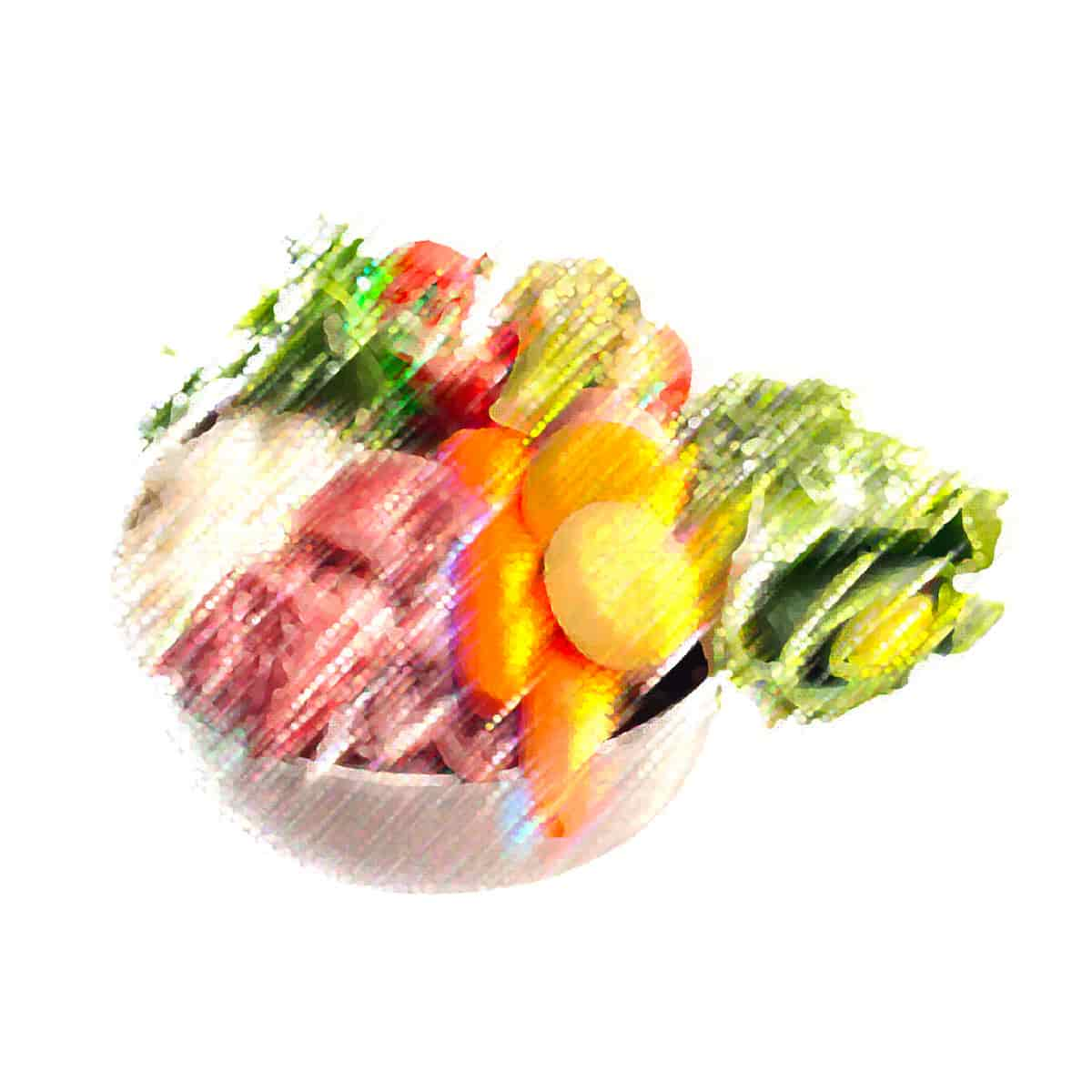
Many dogs love the taste of raw meat! If your dog digests raw meat well, you can try it!
Duck neck, chicken legs, offal and beef tongue are just a few examples. It should be noted that not all owners are ready for such an Akita Inu diet.
If you are giving raw treats, make sure the treat is trustworthy. A dog's digestive tract is short and highly acidic so it can handle a small amount of bacteria, but cleanliness and safe behavior is still very important as the food is not cooked to kill any pathogens. Think of a raw treat by the same standards as when you eat raw food (like sushi or beef steak tartare). You wouldn't eat old raw salmon or meat, would you?
Typically, a raw food diet for dogs includes:
- Muscles, often still on the bones.
- Bones whole or crushed.
- Organ meats such as liver and kidneys.
- Raw eggs.
- Vegetables such as broccoli, spinach and celery.
- Apples or other fruits.
- Some dairy products, such as yogurt or cottage cheese.
DO NOT feed your dog boiled bones. Cooked bones can crack and damage your dog's delicate intestines, resulting in bloody stools.
Japanese Akita: raw diet or food?
The raw food diet for dogs is controversial. But diets that emphasize raw meat, bones, fruits, and vegetables are growing in popularity.
Most likely the answer lies in the middle. Now there are high-quality foods for large dogs that provide a complete set of all the necessary substances, and no one forbade preparing treats from raw foods on their own.
In addition, several other types of raw dog food have emerged.
Special processed raw food diets, frozen or freeze-dried and combination diets that use mixtures of grains, vegetables and mixed vitamins with store-bought raw meat.
It all depends on the balance of the ingredients. If you approach the Akita Inu diet wisely, the result will always be successful, and your Akita will please you for a long time.
Whether it's raw food or feed, each has its own advantages and disadvantages. Eating raw foods is fine, but they cost at least twice as much as dry food and are an order of magnitude more hassle.
Many dog owners opt for a raw food diet based on myths that intimidate the quality of commercial pet food.
If you prefer a homemade diet and want to avoid dry commercial foods, we recommend that you thoroughly research the nutritional issues of the Japanese Akita before switching to a raw diet only.
When switching to raw food, be sure to take into account the physical condition of your Akita Inu. For example, diets rich in protein are not suitable for dogs with advanced renal or severe liver failure.
Before switching to raw food, dogs with pancreatitis or other digestive problems are advised to start with a home cooked diet and after the health problems have been resolved. Dogs with cancer, chemotherapy, or dogs with other immunosuppressive conditions should also not eat raw food.
A raw food diet is not recommended for puppies. If you don't get the right calcium to phosphorus ratio, your puppy may have bone deformities and growth problems.
Most of the benefits of a raw food diet for dogs, such as a shinier coat, are the result of the high-fat composition of a homemade diet - typical raw food. But commercial high fat foods are now available that produce the same effect without the risk of an unbalanced Akita In diet.
Supplements can be used as an alternative to increasing the amount of fats and vitamins in a dog's diet.
Nutritional Supplements for Akita Inu
Before giving your Akita any supplement, make sure it is recommended by a veterinarian or canine nutritionist.
Supplements unnecessarily can be hazardous to the Akita Inu's health.
If you are not sure about the dosage, consult your veterinarian!
Supplements are not needed if you provide your Akita with a fully balanced diet.
If nutritional balance is not maintained, supplements should be included in the diet.
Supplements should be taken in the following cases:
- Akita pregnancy.
- Recovery after illness.
- Change in coat color.
- Sometimes it is necessary to include supplements in his diet during the puppy's growth period.
In general, your Akita may need the following supplements:
- Vitamins C, E and A for skin health.
- B vitamins for energy and help manage stress.
- Vitamin D and calcium for bone health.
- Omega-3 fatty acids to fight inflammation and coat.
- Antioxidants for eye health.
Healthy skin and coat
Omega-3 supplements such as coconut oil, salmon oil or olive oil or Omega oils in capsules.
Thyroid Health
Supplements of iodine or other seaweed products. Algae has the added benefit of maintaining good oral hygiene and fresh breath.
Improving digestion
Probiotics such as yogurt, kefir or powders.
For hard stools: Use a prebiotic (not to be confused with a probiotic), unsweetened canned pumpkin puree, or low-sodium (or no) canned green beans.
For constipation: mashed roasted yams (sweet potatoes), green beans, unsweetened canned pumpkin puree, or low-sodium (or no) canned green beans.
Japanese Akita — Breed Standard
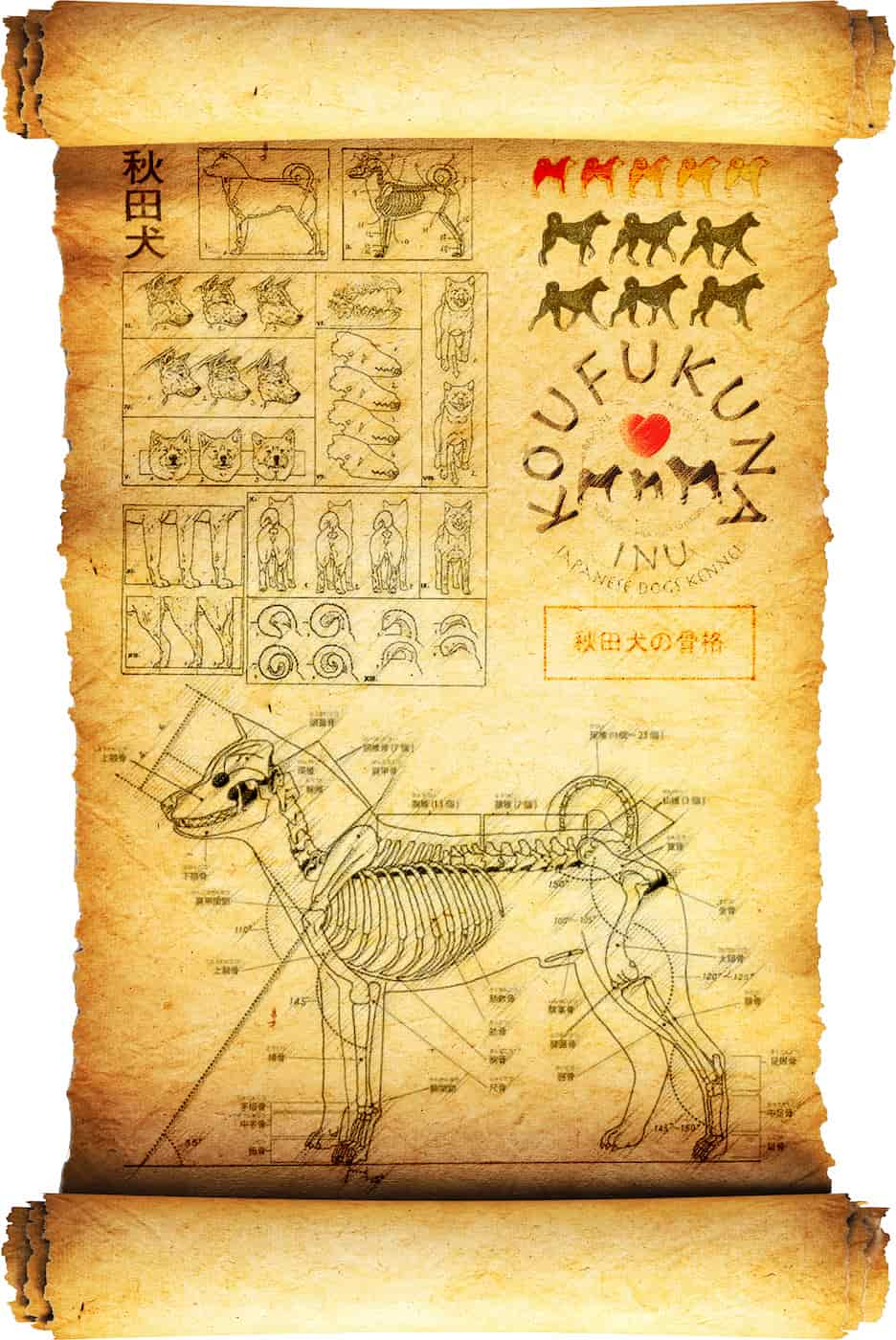
To date, there are several breed standards for the Japanese Akita.
The most common standards are:
- Standard AKIHO
Akitainu Hozonkai - Standard NIPPO
Nihonken Hozonkai - Standard FCI
International Cynological Association - Standard AKC
American Kennel Association - Standard UKC
United Kennel Club
All existing Japanese Akita-in breed standards at different times received changes and clarifications, and in general are derived from the original Japanese standards, which, in turn, were also supplemented and specified.
All standards are guidelines describing the ideal characteristics, temperament and appearance of the breed and guaranteeing the correct development of the breed.
Many experts argue that modern standards are aimed at "reproducing the original Akita" and clearly separating the American Akita from the Japanese.
At the same time, Japanese Experts and Breed Guardians state that the original standards for Akita dogs have not changed. Only details have been added to help judges and breeders better understand the breed standard, which will then aid their efforts to restore and improve the impure form of the Akita dog in relation to the Japanese Akita Inu.
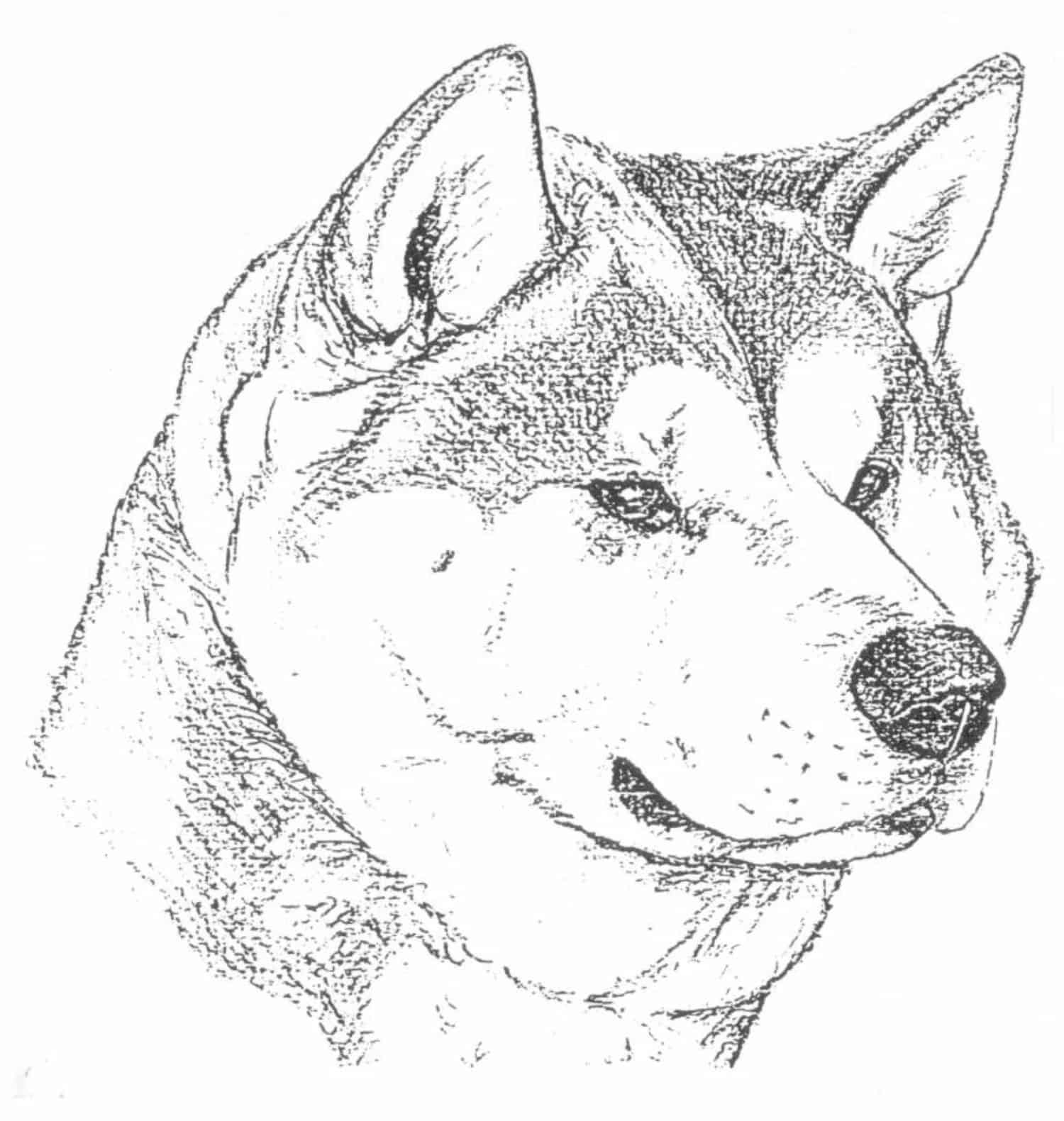 |
|
|
Origin Japan
|
|
|
Date Of Publication Of The Official Valid Standard 13.03.2001
|
|
|
Utilization Companion dog.
|
|
|
FCI-Classification Group 5. Spitz and primitive type.
|
|
|
Brief Historical Summary Originally Japanese dogs were small to medium in size and no large breeds existed. Since 1603 in the Akita region, Akita Matagis (medium-sized bear-hunting dogs) were used as fighting dogs. From 1868 Akita Matagis were crossed with Tosas and Mastiffs. Consequently, the size of this breed increased but characteristics associated with Spitz type were lost.
|
|
|
General Appearance Large-sized dog, sturdily built, well balanced and with much substance; secondary sex characteristics strongly marked, with high nobility and dignity in modesty; constitution tough.
|
|
|
Important Proportions The ratio of height at withers to length of body (from the point of the shoulders to the point of the buttock) is 10 : 11, but the body is slightly longer in bitches than in dogs. |
|
|
Behaviour / Temperament The temperament is composed, faithful, docile and receptive. |
|
|
Head CRANIAL REGION:
FACIAL REGION:
|
|
|
Eyes Relatively small, almost triangular in shape due to the rising of the outer eye corner, set moderately apart, dark brown: the darker, the better.
|
|
|
Ears Relatively small, thick, triangular, slightly rounded at tips, set moderately apart, pricked and inclining forward.
|
|
|
Neck Thick and muscular, without dewlap, in balance with head.
|
|
|
Body
|
|
|
Tail Set on high, thick, carried vigorously curled over back; the tip nearly reaching hocks when let down.
|
|
|
Limbs FOREQUARTERS:
HINDQUARTERS:
|
|
|
Gait Resilient and powerful movement.
|
|
|
Coat
|
|
|
Size Height at withers: Dogs : 67 cm, There is a tolerance of 3 cm more or less.
|
|
|
Faults Any departure from the foregoing points should be considered a fault and the seriousness with which the fault should be regarded should be in exact proportion to its degree and its effect upon the health and welfare of the dog.
|
|
|
Disqualifying Faults
|
|
|
N.B.:
|
|
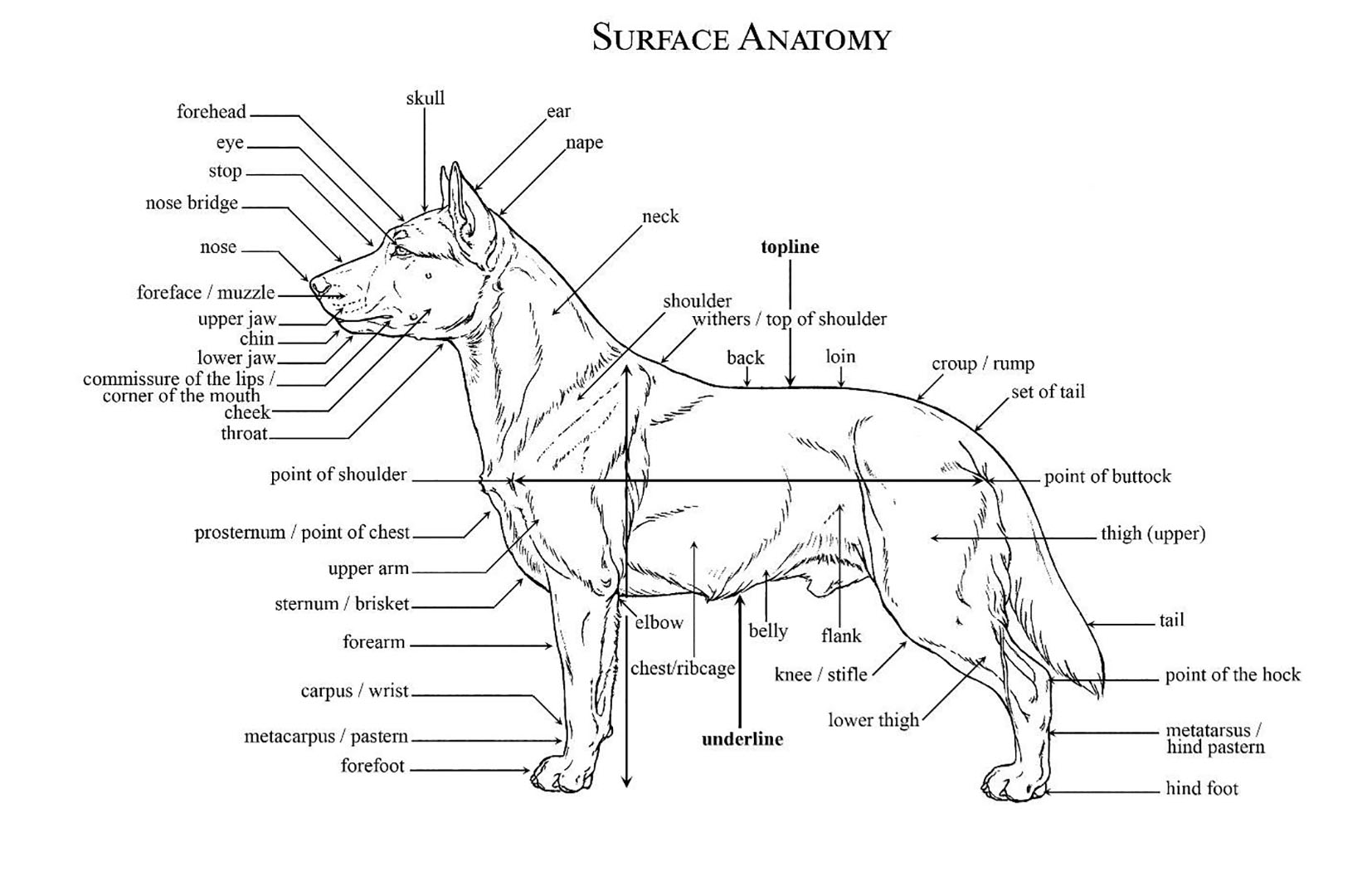 |
Akita Inu Classes
Show class — the best puppies in the litter, usually with a pure pedigree, physically and mentally healthy. Usually a class is assigned to a puppy not younger than 5 months. Great for shows and pedigree breeding. Akita Inu puppies show class have the highest cost.
Breed-class — similar to the representatives of the show-box, however, unlike the first, they are excellent for breeding.
Pet-class — puppies with cosmetic defects (dental defects, color disturbances, etc.), which are unacceptable for show dogs. The price policy of such puppies is much cheaper.
How to buy an Akita Inu puppy?
In our kennel KOUFUKUNA❤️INU you can order and purchase an Akita Inu puppy from titled parents. We breed Japanese breeds: Akita Inu, Shiba Inu and Hokkaido. 👉 More about our Kennel.
In most cases, a puppy is bought with a pre-booking in future litters of the parents. 👉 How to buy a Puppy.
To purchase a Puppy, it is enough to place an order on the website or contact us in any convenient way: Viber, WhatsApp, Facebook Messenger, Instagram Direct. You will receive all the necessary advice and answers.
In most cases, we sell puppies after booking, but there are cases when Puppies are sold on availability, such puppies have separate pages on our website with their own price and photos and descriptions.
